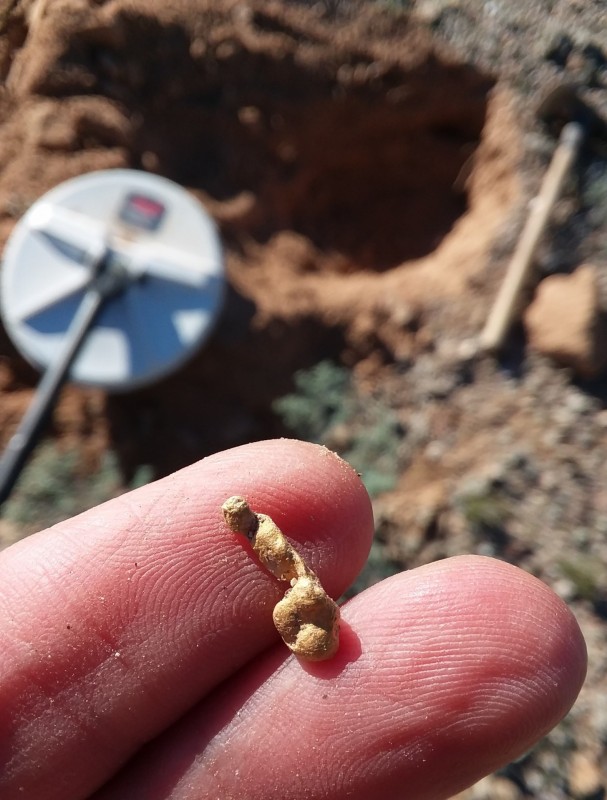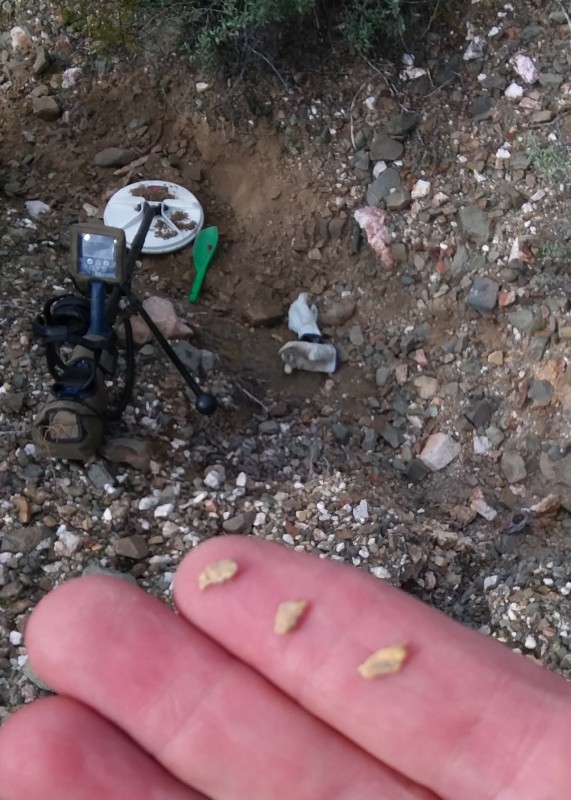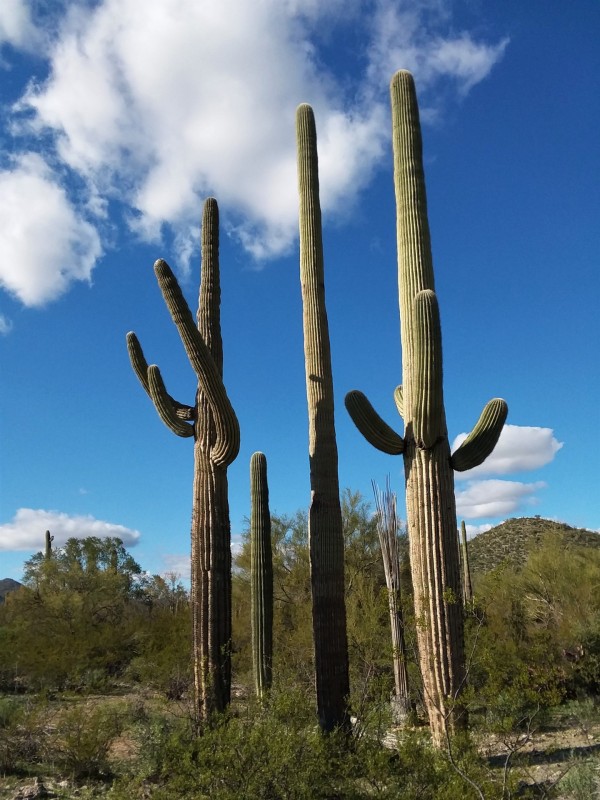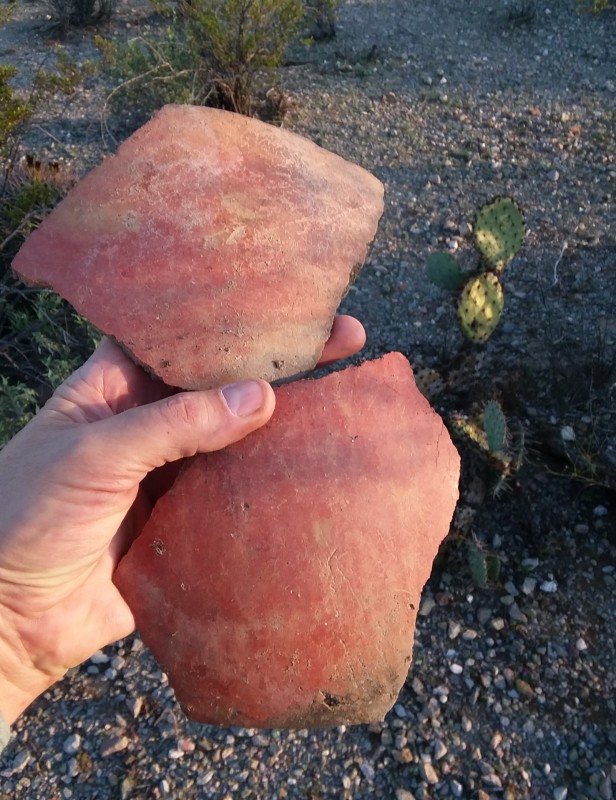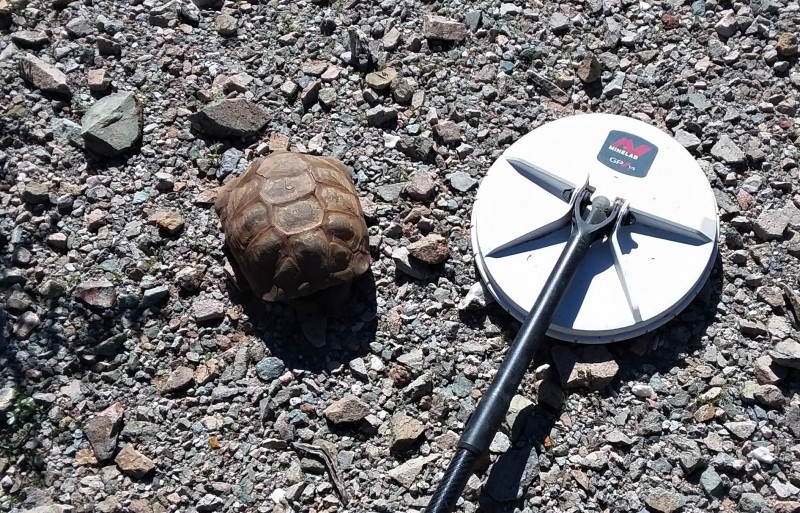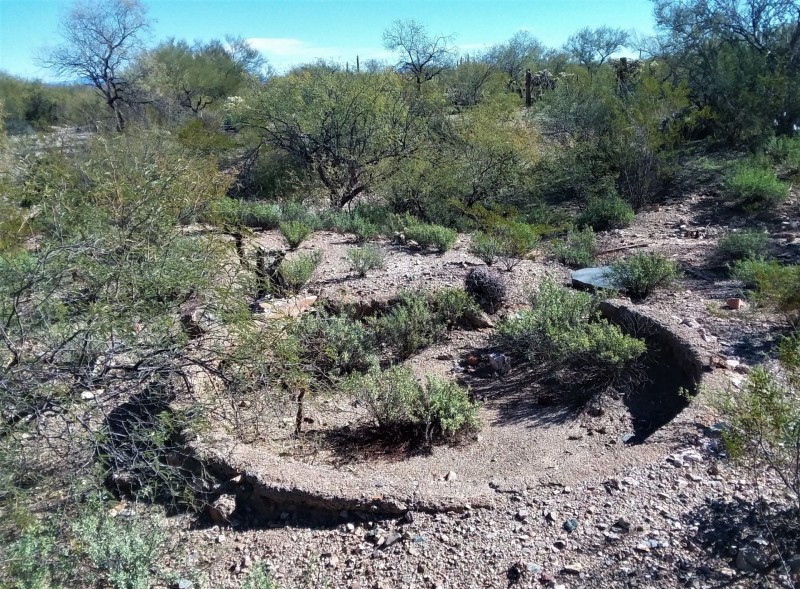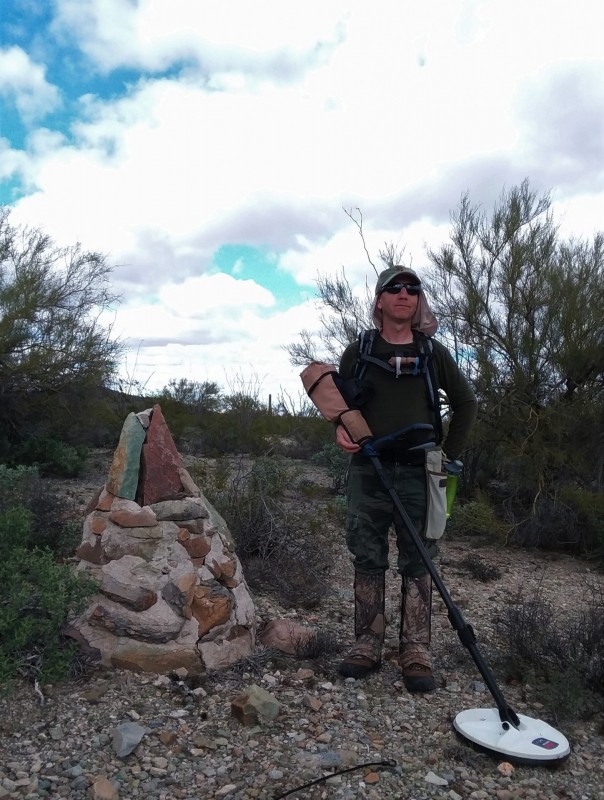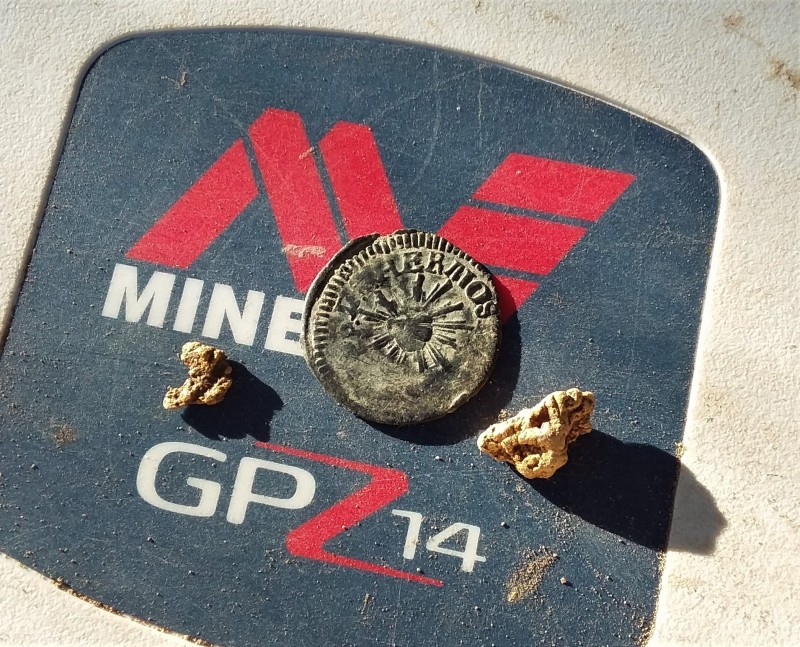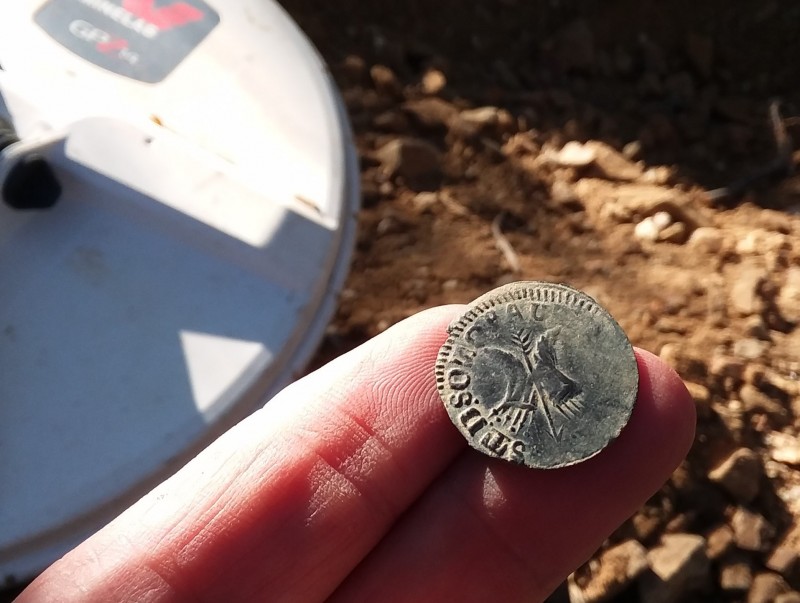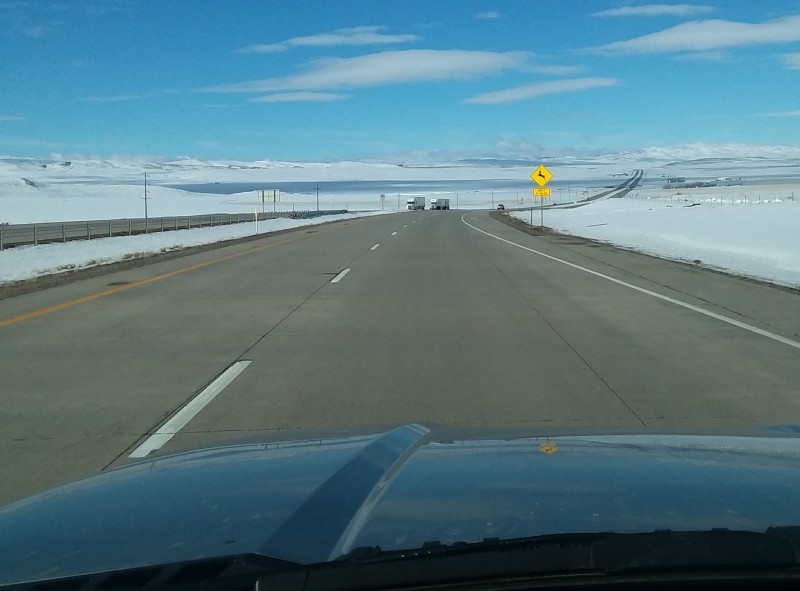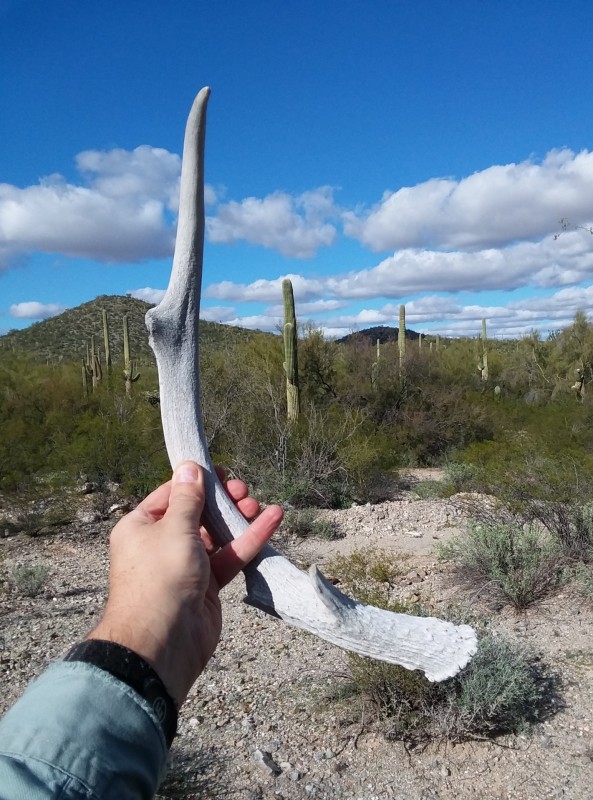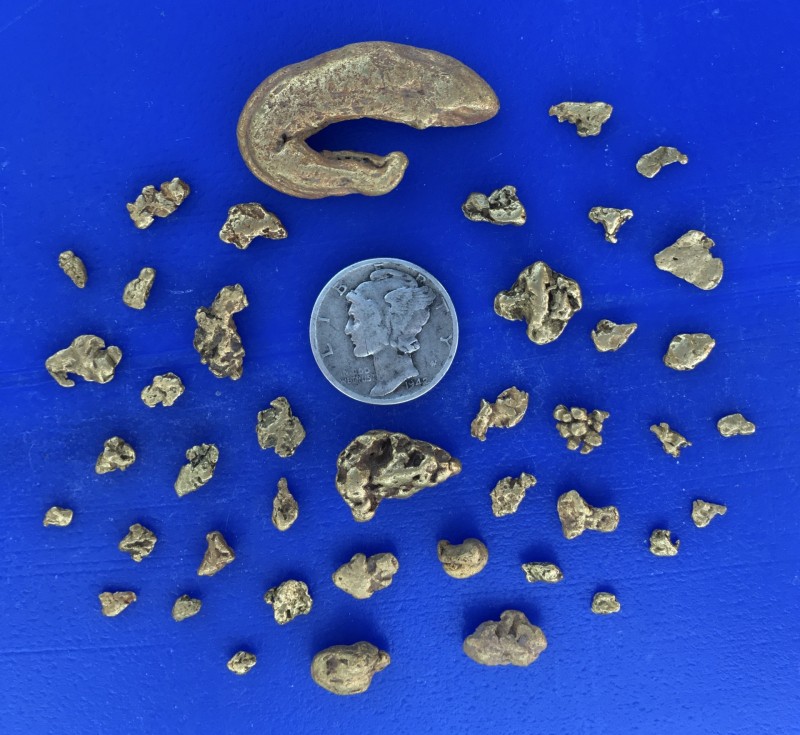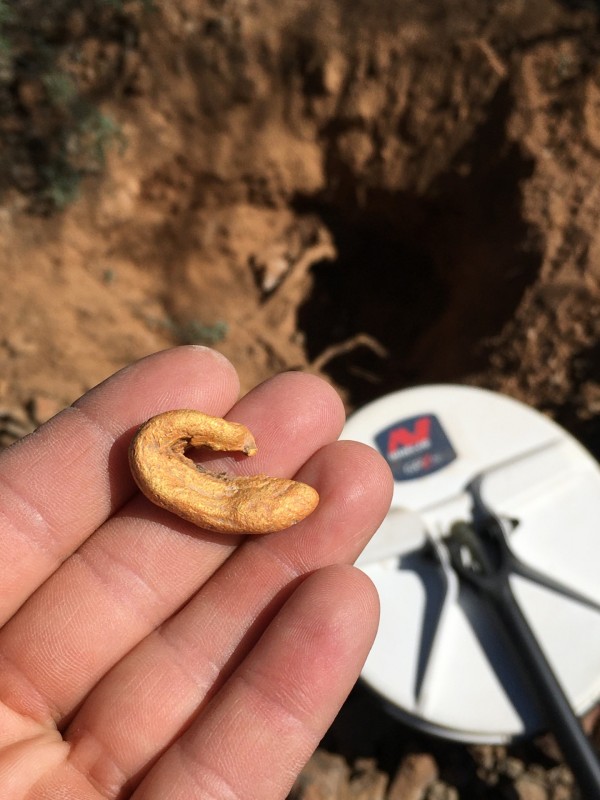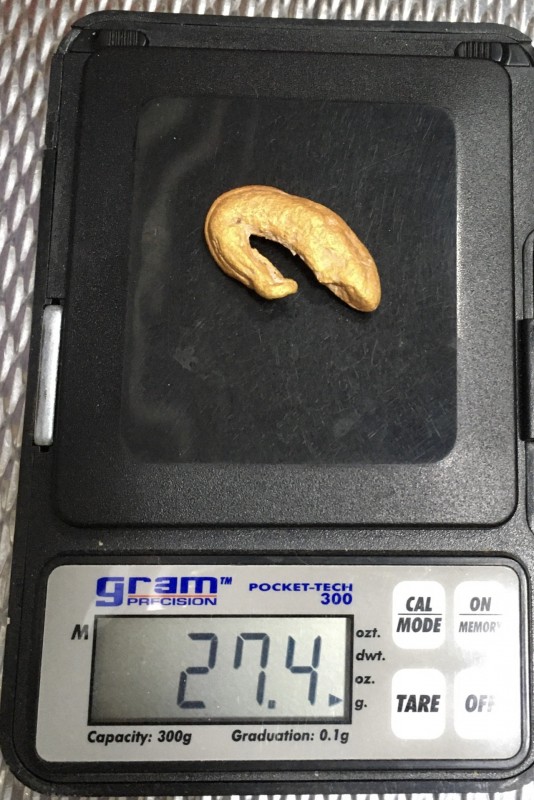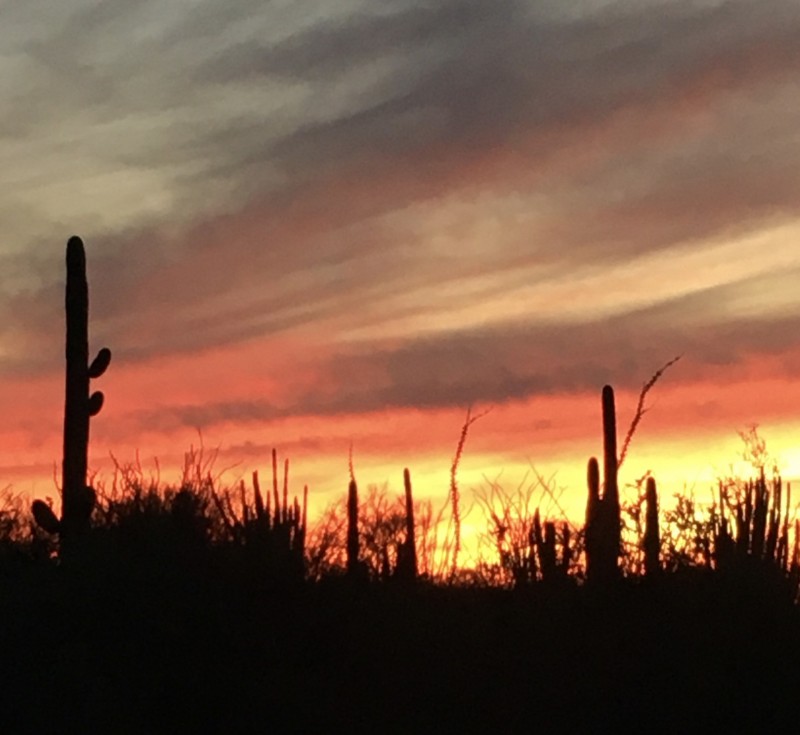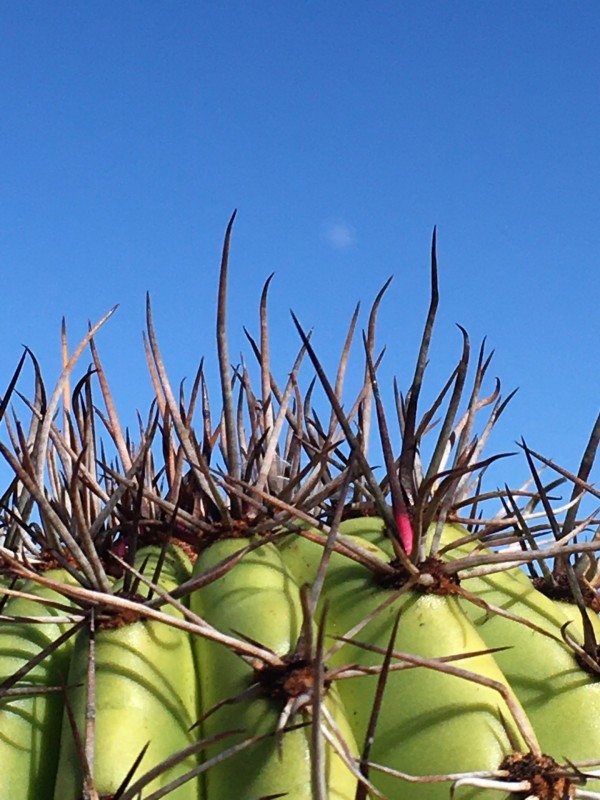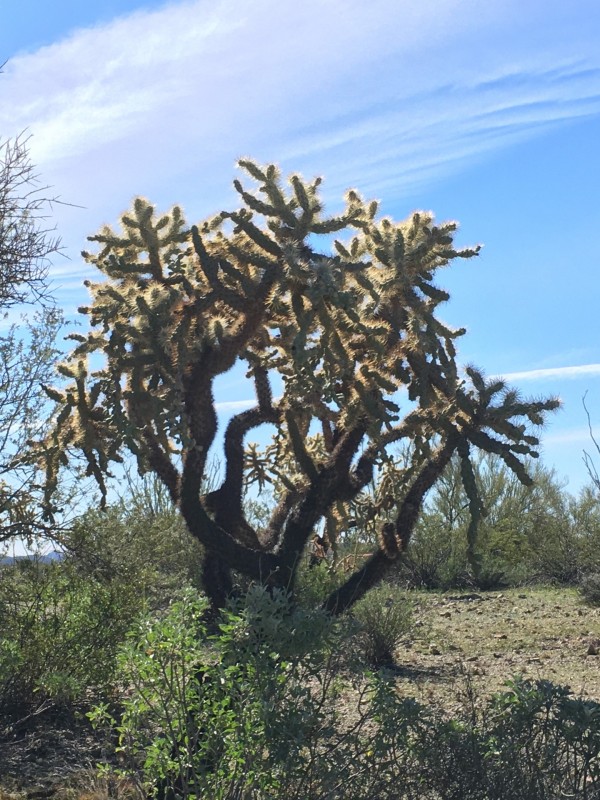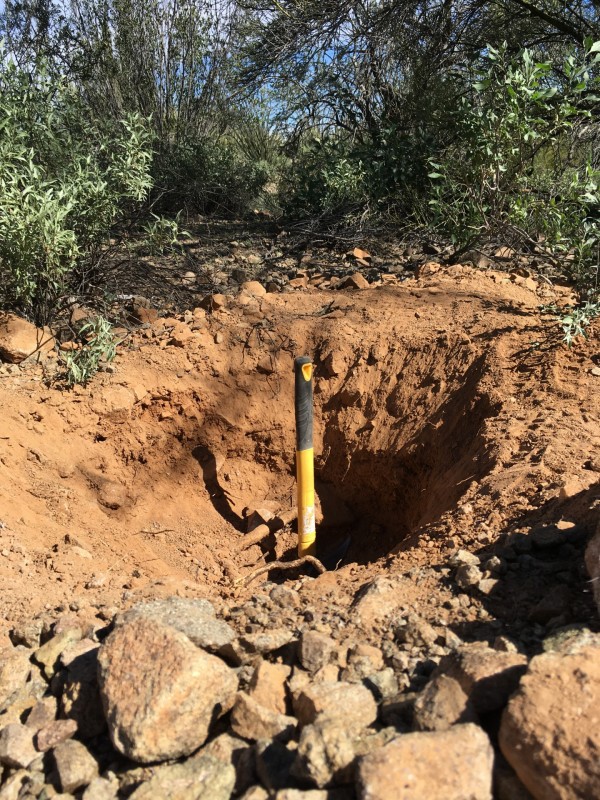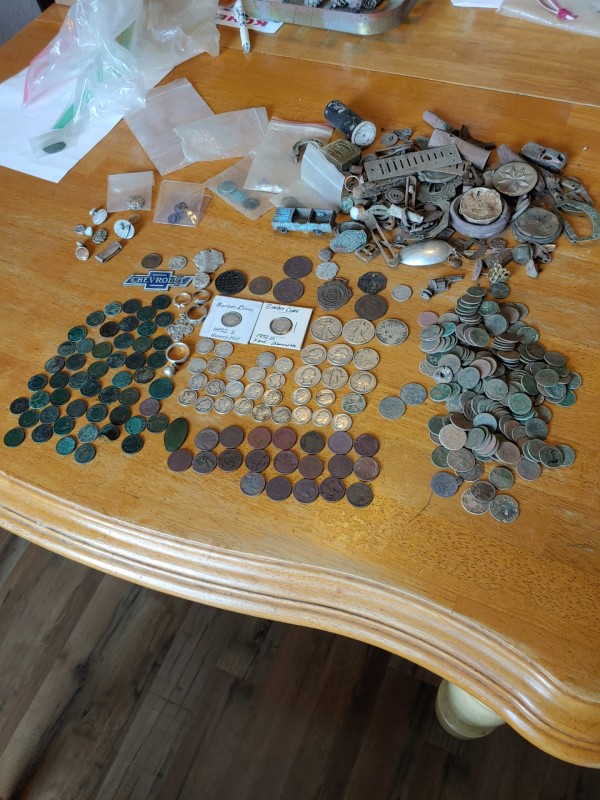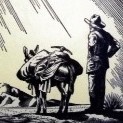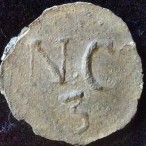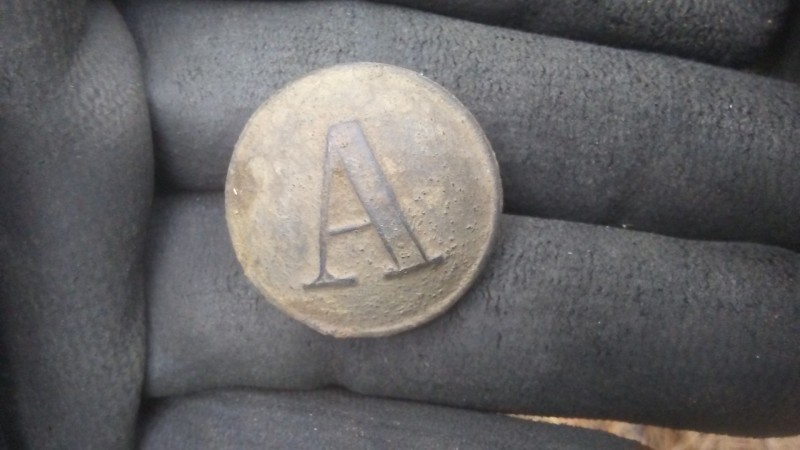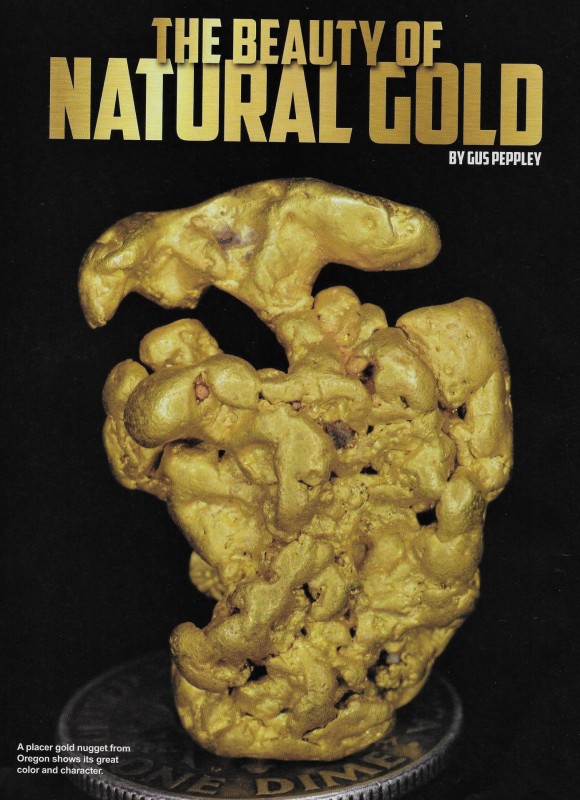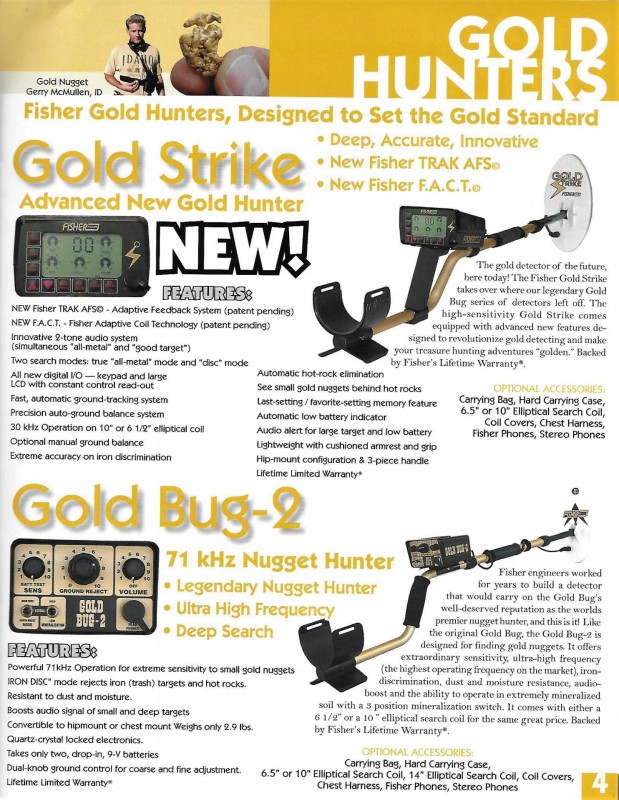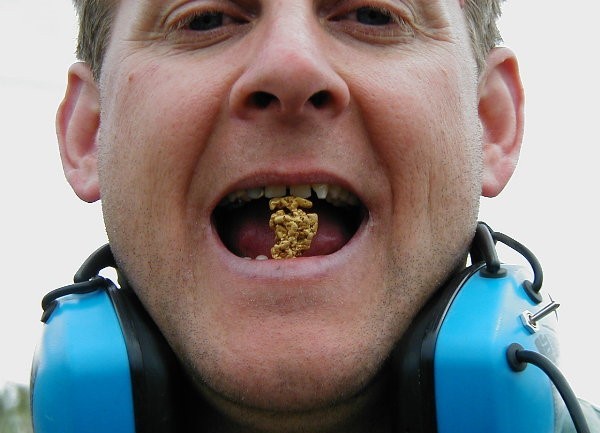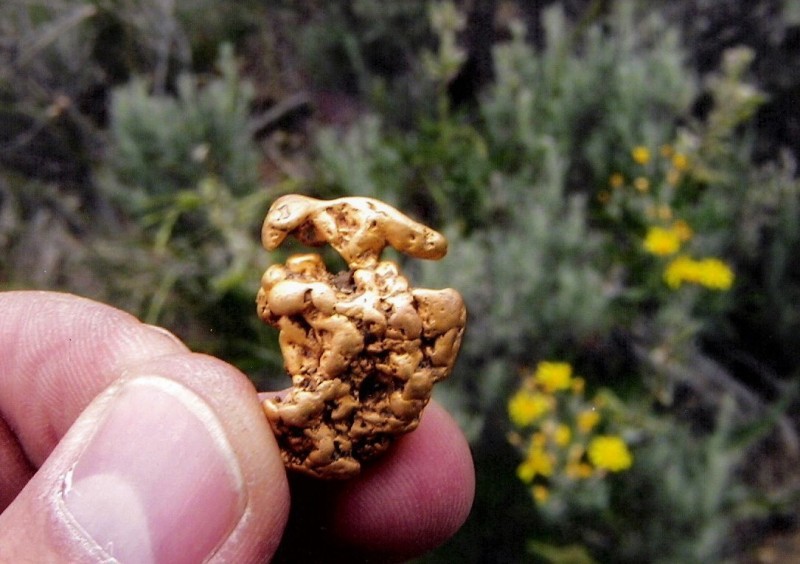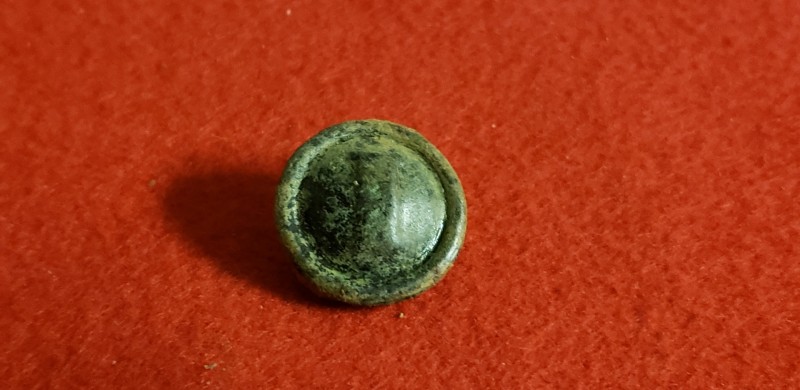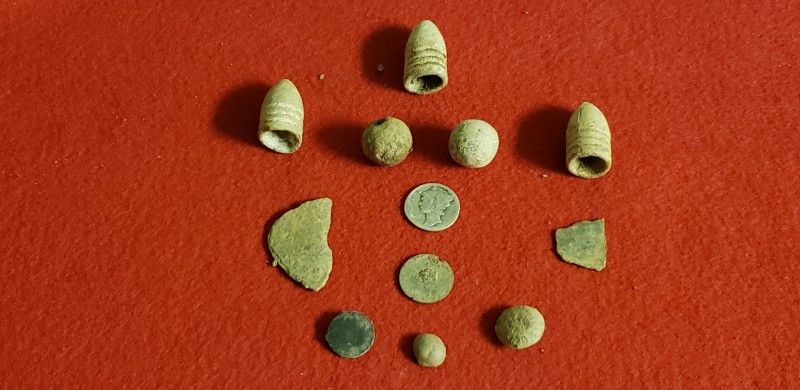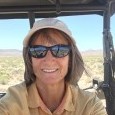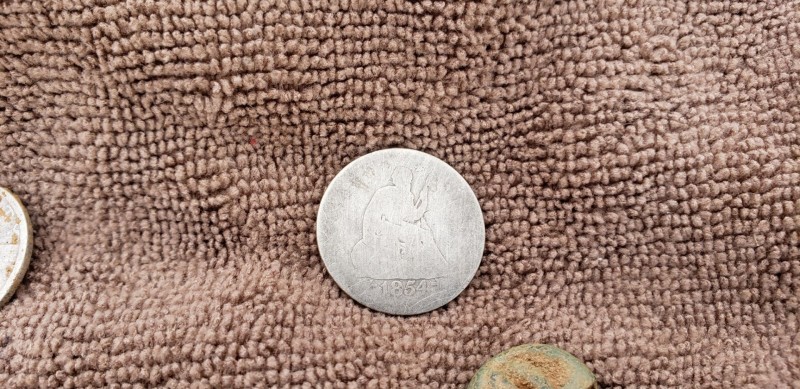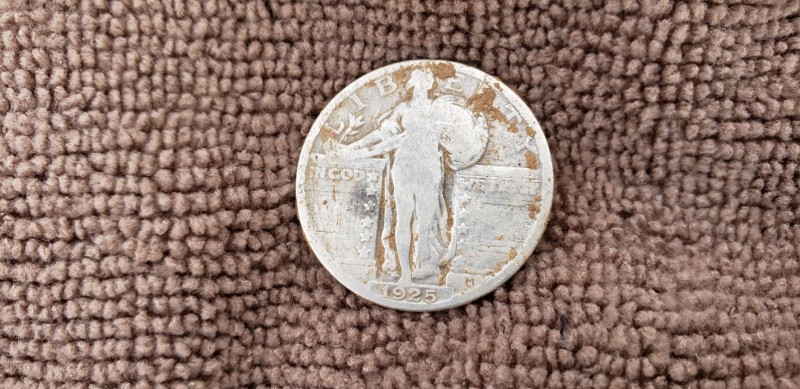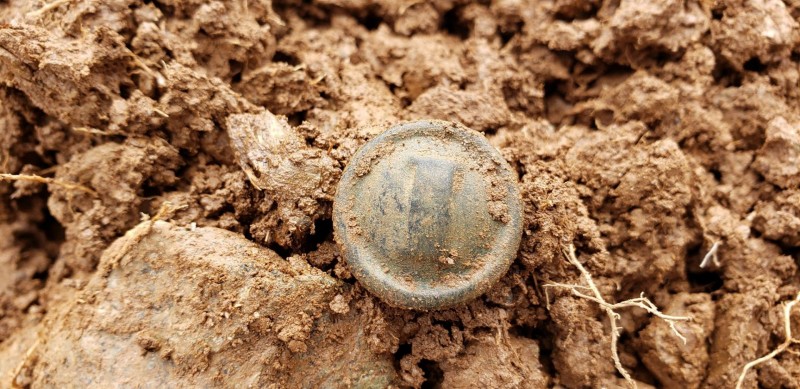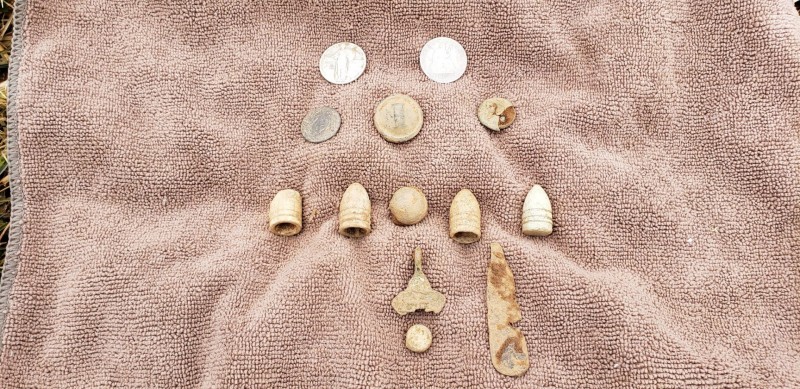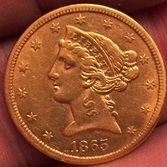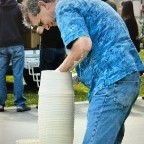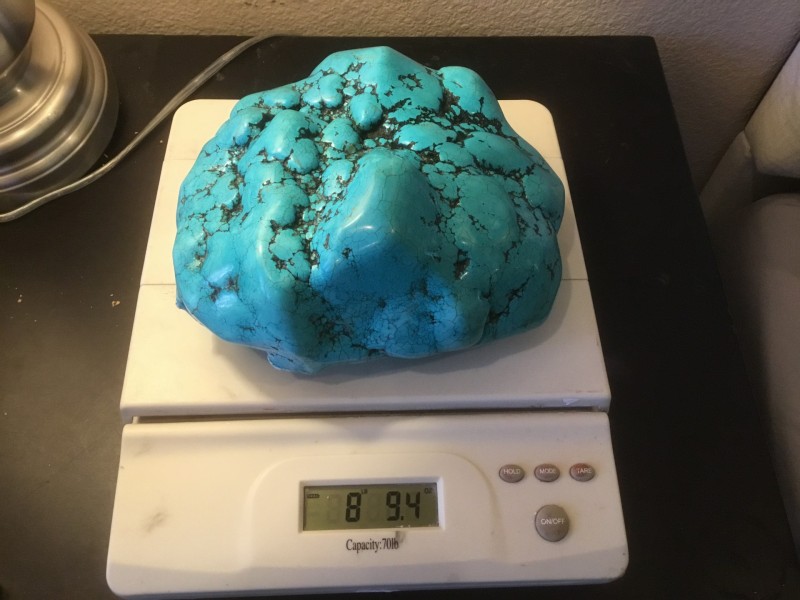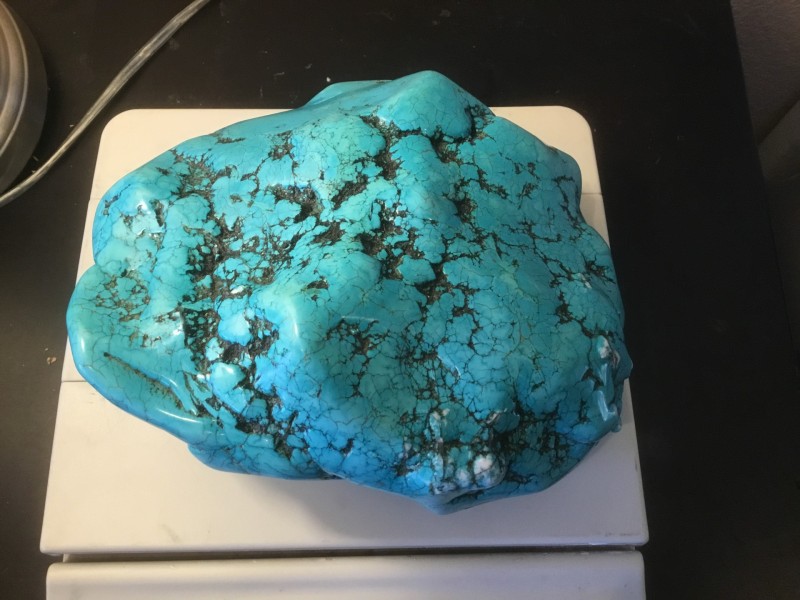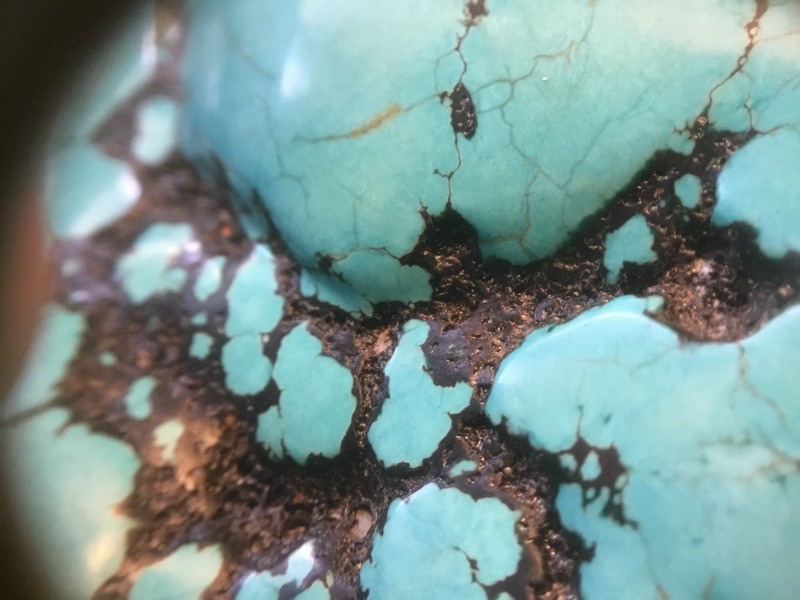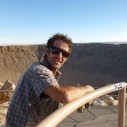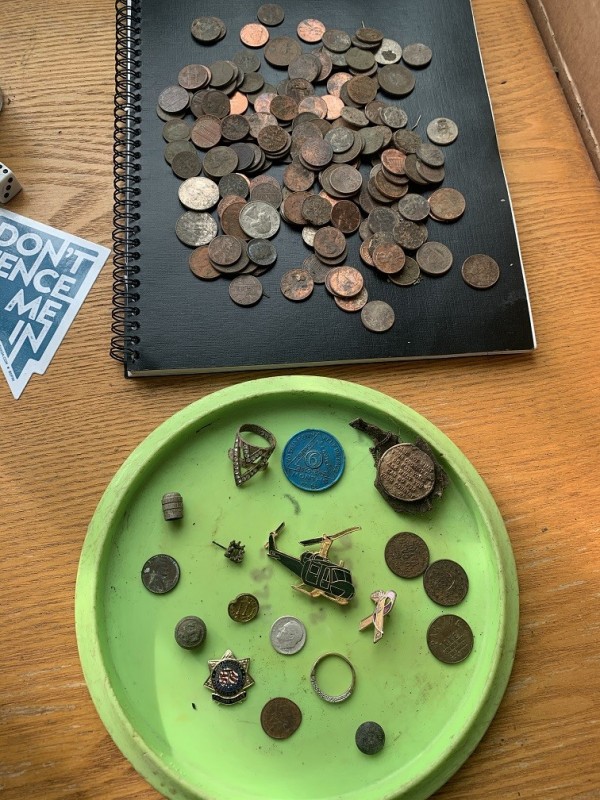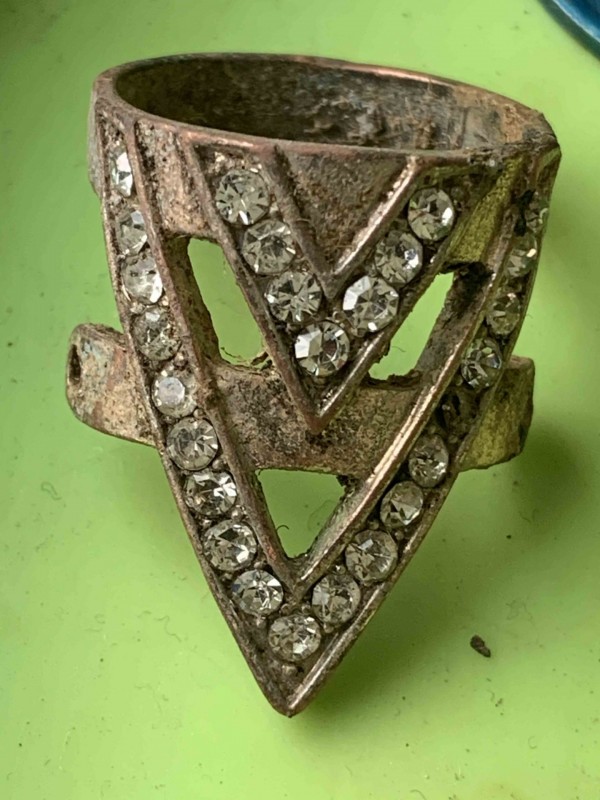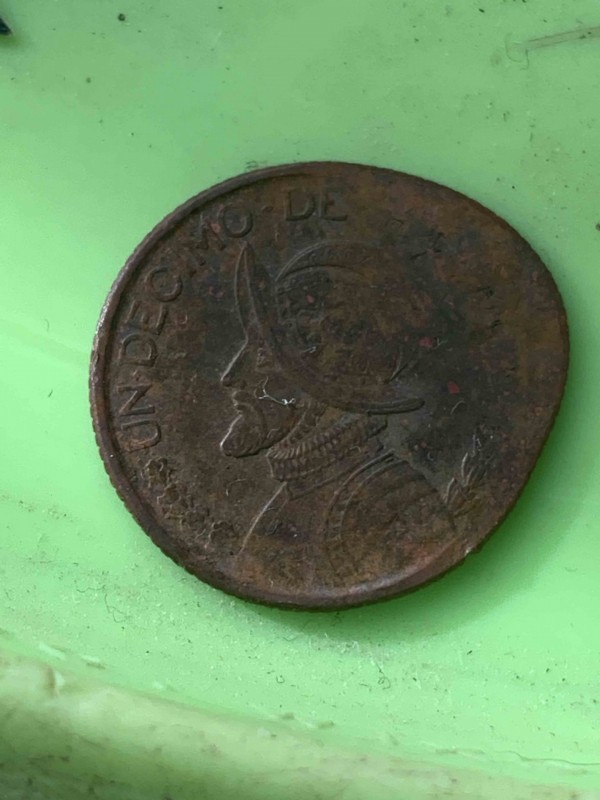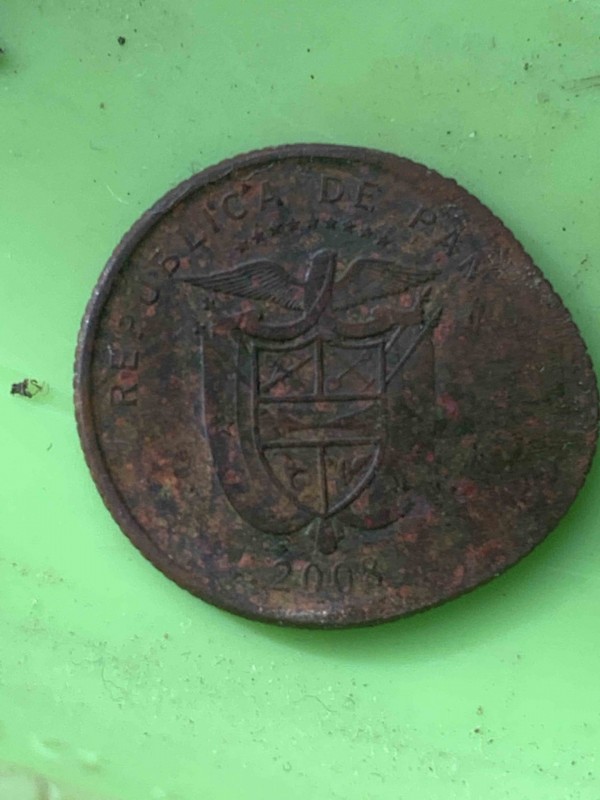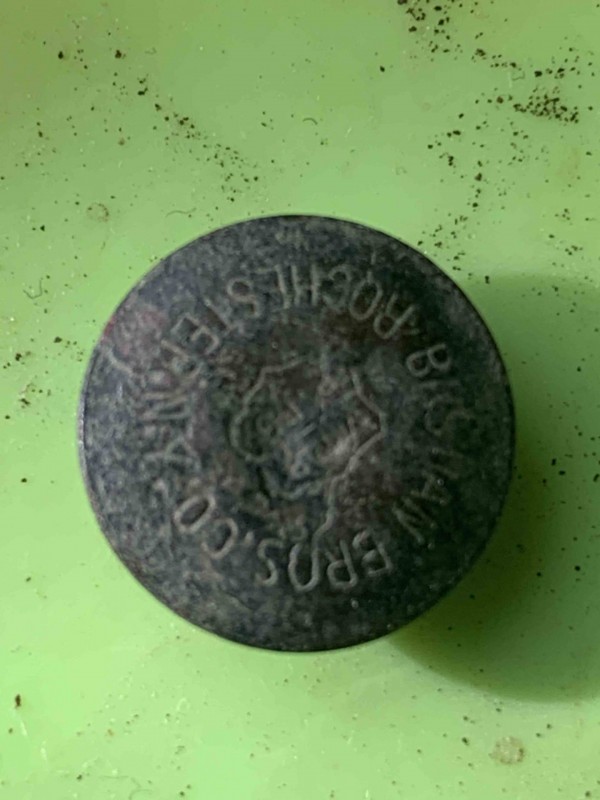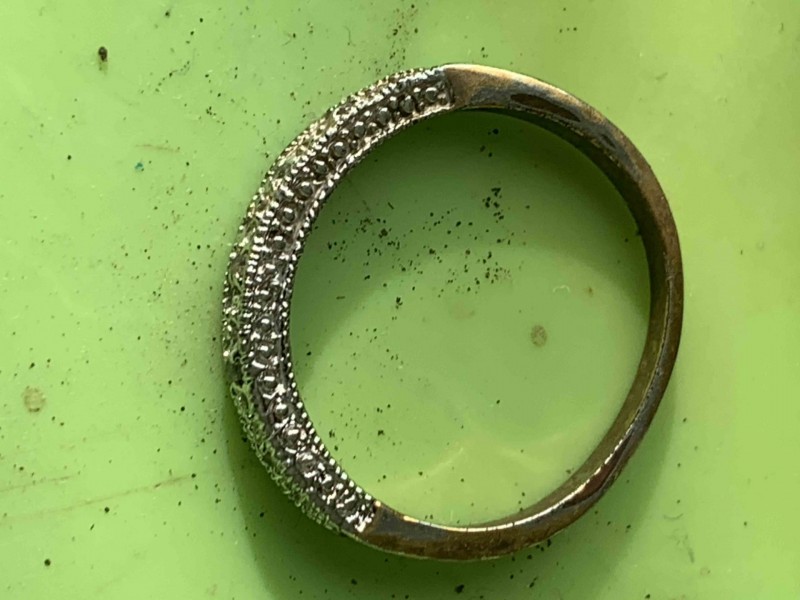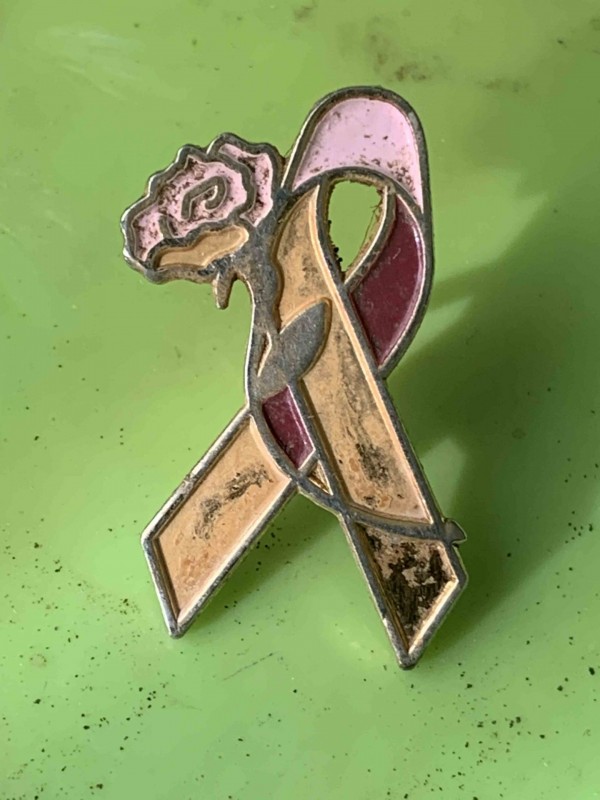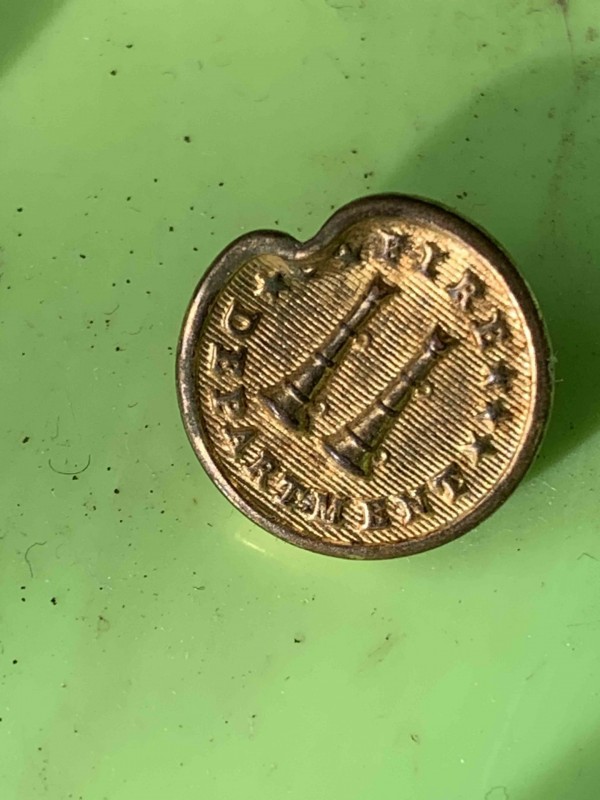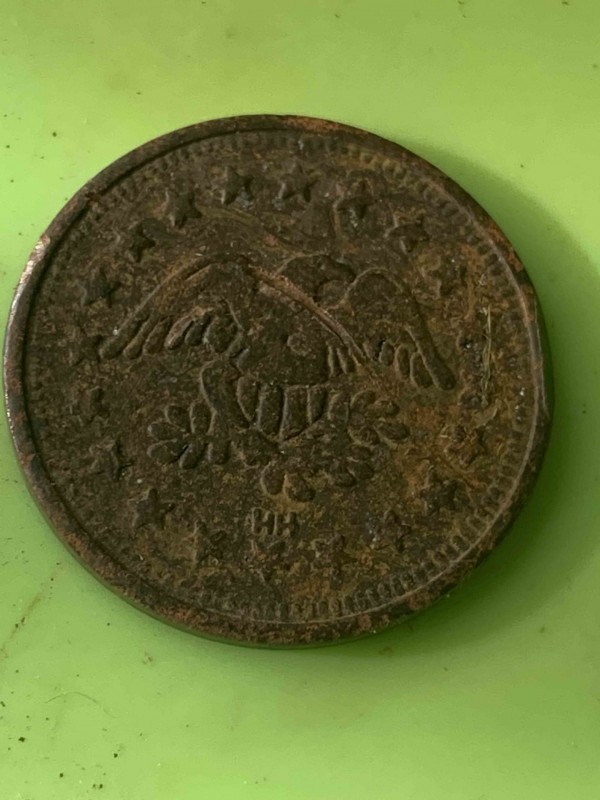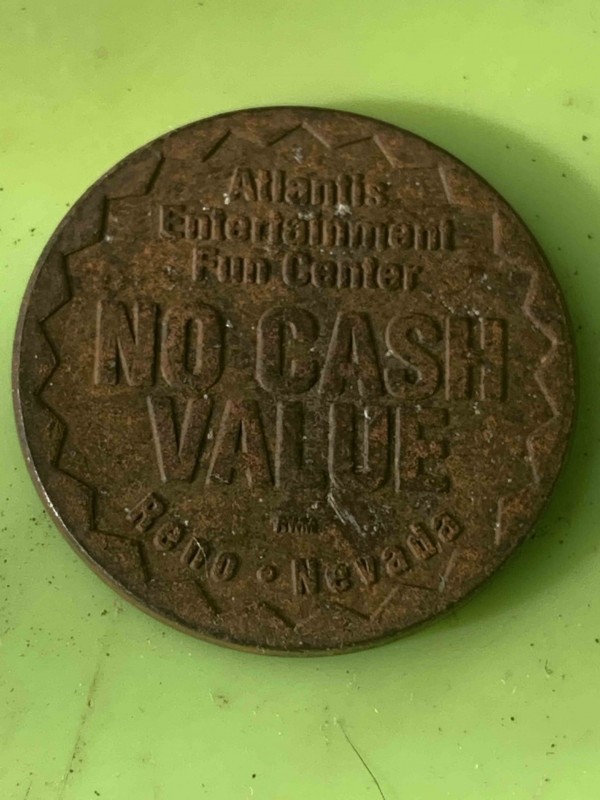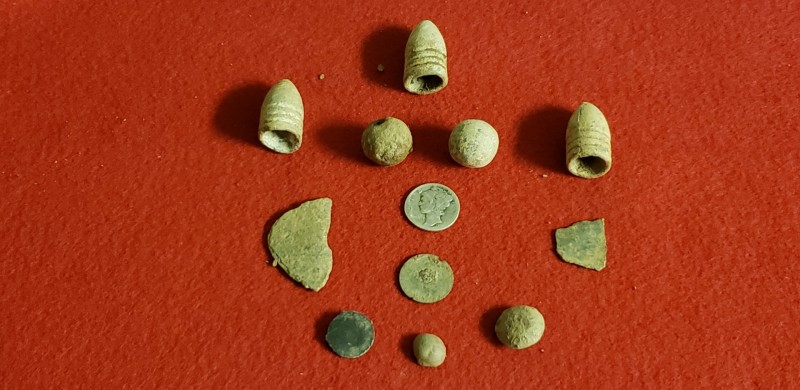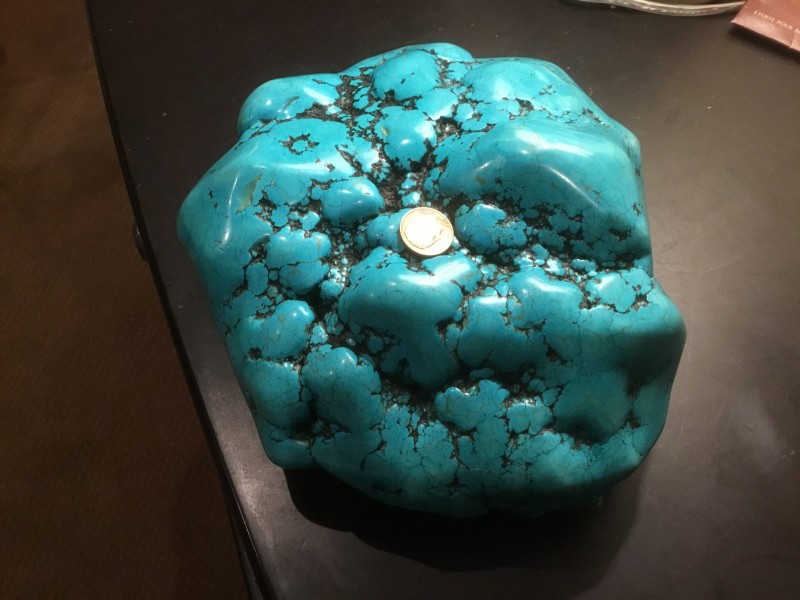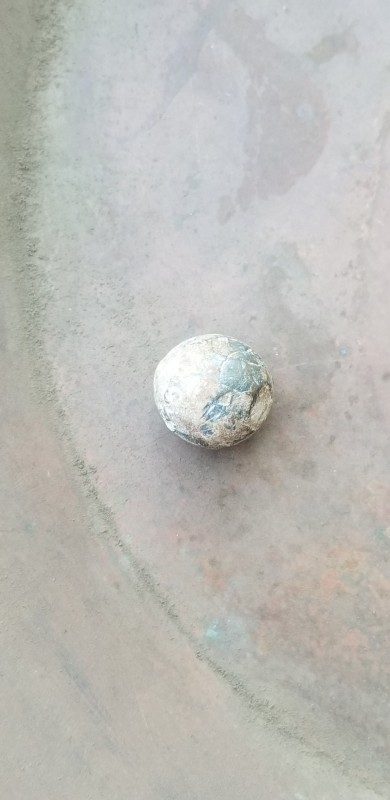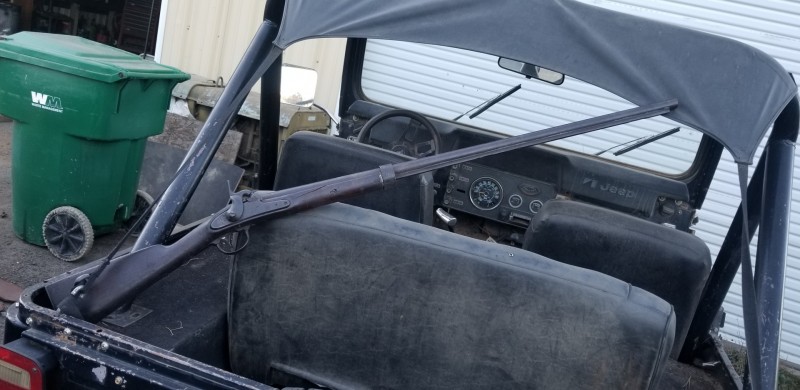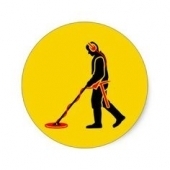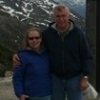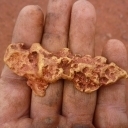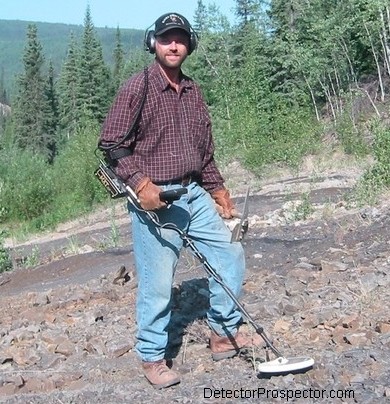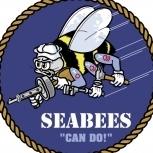Leaderboard
Popular Content
Showing content with the highest reputation on 02/17/2020 in all areas
-
Back from our Mexico gold hunt and wanted to share a few photos and my story. Every day I swung my 7000 I found gold nuggets. 60+ pieces weighing over 41 grams. (picture of gold and shovel is to show size comparison as some pics make the gold look bigger) So there is good gold to be found, but you don’t fill your pockets as we all dream. The locals who hunt there all use 7000’s and they are really good. They only miss the faintest of signals or the occasional boomer off the beaten path. Me being a 6’ 2” 230 lb guy is hard to get into the cactus bushes to find virgin ground. In fact I only found 1 small patch of undetected ground that held gold and over 9 grams came from that patch. The local Mexican folks have no issues getting into the thickets and I could see their dig holes in them. I give them credit for their desire and determination. Cactus, the guardian angels of the MX gold is everywhere. With over 600+ species alone in Mexico, I was amazed to see and able to get pricked by (it seemed all 600+ kinds) many. Some of them are masters at growing in the funniest of shapes and statues. I was amazed and giggled many times while trying to find a landmark for return. Best to use your GPS on the 7000 (thanks Luck for showing me) as it is really pretty easy. I learned quickly, most of my clothing including the Merrell Hikers were no match for the variety of pokers. I took 3 different pairs of boots and the all leather, heavy duty uncomfortable ones were the least effected from the pricks. I took a pair of shorts and T-shirts for hotter days but could not wear them. Long sleeve shirt and thick pants were a must. Found out on my 1st day there getting on my knees or anywhere on the ground was dangerous and I ended up buying a thick pair of knee pads. I managed 3 small pickers in one spot at the bottom of this wash. This looks like a cactus nugget right? I think I'll polish it and give it to my wife. Lunk was all eagle eyes and found some rare pottery shards probably from a water transport jug. There are desert tortoise to be found (more rare than gold) We were even rewarded seeing the ancient grinding pads, two of them, called an arrastra and were used to grind ore. Their desert is more beautiful than I expected and also has a much greater degree of mountains to climb that what I imagined. Another interesting part of the trip seeing the antique ways of prospects (100 to 200+ yr old dry wash piles) and their claim corner markers. Lunk always looks so serious. Notice he wore snake guards. I asked him about them and he said the snakes were not bad this time of year. He did not tell me to bring some for the attacking cacti and all their brothers. My coolest find of the trip was actually not gold at all but a copper type coin that looks to be hammered, made (very thin and off center struck) and has some words and symbols. I’ve been updated with identification as an early MX ¼ reale coin from 1830’s. The 2 nuggets and coin were all in one small area together. I also spotted (on the run) a small buck deer. A few days before, I found a big daddy antler. The last day in MX was me on the beach enjoying the Gulf of California (on the MX side). The very next day was me in snow as I was heading back to Idaho. So the total driven miles on my truck for the trip was over 2800. I lived in the back of the truck with the camper shell and the 40 degree nights was no issues for cold. Used my small compact Jetboil burner to heat water for cooking/bathing. The warm upper 70’s and lower 80 degree temps in days allowed for my canned and or packaged meals to be heated by placing them on my dash in the truck. Plenty of gold is still in MX., but the reality of it is, the gravy is gone. You’ll work you butt off finding it and most pieces you find are sub ½ grammers. It reminds me somewhat of Rye Patch, NV in a way as most folks won’t find any and those who do usually only find a few each day. The really big ones for the most part have already been found, but popping an occasional 1/4 oz’er+ is still possible. My own biggest piece of gold for the trip was only 4.9 grams, but I did see one find that was a multi ouncer 3 to 4 oz. Was the trip worth it and did my gold finds pay expenses? I’m all about adventure and as long as my body holds up I’ll go most anywhere with a metal detector at least once. Checking spot gold today shows $1580 oz. so that equates to just over $50 a gram. Take $50 a gram X 41 grams of nuggets = $2000. My cost for the trip with insurance, fees, all food and drinks was $1800. But with me, just like my travels to Australia, it is more about the “just go do it” adventure, than it is the finds or value of. Hopefully everyone enjoys the pics and story.13 points
-
Thanks for calling me out, Mike; I haven't made the time to post my experiences during the trip with Gerry yet. No better time than the present, as they say! I was able to stay a bit longer in Mexico than Gerry, and my Zed located 50 grams of the good stuff. The large piece at the top of the photo has been dubbed the goldfish nugget - a very unique piece. It was fairly deep and manifested as a faint warble in the High Yield / Normal combination. Weighing in at over 27 grams, it was by far the largest find of the expedition. Except for the two days in a row that the rain came down in torrents, the weather was great, with some spectacular sunsets. As Gerry mentioned, the plentiful array of cacti made us very mindful of our surroundings at all times. Our foray south of the border was filled with many memorable experiences, and we were most fortunate to have been given the opportunity to chase the elusive yellow metal in the beautiful wilderness of Mexico. Muchas gracias por nuestro anfitrión y al propietario de la tierra para extendar su generosa invitación.12 points
-
Actually my look was a “quit wasting time taking photos so we could go find some gold” kind of expression, LOL!6 points
-
Heritage seems to be the gold auctioneer of choice for many gold nugget sellers. Before you dolly that nugget find out their charges and you might get a great premium for a little bit of preparation. When they market they do excellent photography. Here is their next auction link. https://fineart.ha.com/c/search-results.zx?N=3173+792+42949456815 points
-
4 points
-
Nice country side and gold guys...I've always wanted to prospect in Mexico and the Mongolian step. Must be a real prick (😂) detecting in cacti though! A couple of your pieces look like worn crystal gold and your biggest pice looks like rope gold which is a type of crystal also.4 points
-
Well, I tried a new way to get out to this new gold area I found. The gold seemed fairly small, but I had to hike in at least 3 miles to get there. So I tried to drive in another way in hopes of only having to hike in a mile. Of course Google Earth made things seem better than they were (almost like I could drive right there), but in the end I only cut about a mile off the hike (one way). So now I had a decision to make … take my GPZ 14" coil, the GM1000, or what I call my Midget Coil (10" Xcoil). GPZ 14" about killed me getting out there last time so that was out. I love the GM1000 on bedrock, but some of the bedrock here was very hot. Usually in those cases, I will go to my GPZ 10" Xcoil, which I venture to say is at least on par with the SDC 2300 (with the exception of being a little bigger). And the Xcoil is still a pleasure to hike with. So off I went. I started out hitting the areas I had been to before and got some good signals. First piece was only about .1g. Then I started finding slightly bigger .2g pieces. Most of these seemed to be what I call runners. Those are the ones in washes that I find on the sides of the wash, trying to run away when they see me coming. The larger coils tend to lose a bit of depth when checking the sides and depressions. The 10" Xcoil, however, does very well getting in there. Overall, 5 pieces were found (total .75g). Not a lot, but at least half of these finds were detected very carefully with the 14" coil and were missed. The Xcoil was very clear on all but a 1 grainer piece that was about 2" deep on it's side. All in all, it was just a fun day crumb chasing.3 points
-
That's better than the US production companies offer (usually zero), I get one contacting me every 3 or 4 months. The only network that wanted actual unscripted reality was Vice News (HBO), so props to them. The rest want a hot girl, hot headed partner, or "augmented finds", etc. The producers want to take your ideas, your research, your labor and market it as their own, with no pay in return. They only pay when the series is bought by a network, meanwhile you get to pay to work for them and give them all your ideas and locations for free. Uh, no thanks. TV Production companies have figured out they can just farm Youtube content creators and let others do their work for them and people give it all up in the name of getting their face across a dying media that fewer and fewer watch anymore anyhow. I barely know anyone who even owns a TV anymore, let alone gets cable. Even Youtube is plagued with fakers now though, making it pretty pointless to make real prospecting videos anymore for any reason other than sharing with friends. The Russian electroplated slag guy, the Asian detector guys are the worst offenders. And now even some of the "reputable" US prospecting channels are faking finds - one right on my own old flogged patches none the less which makes it offensively hilarious when they film a greenhorn finding ounces of riverworn California/Alaska nuggets right on surface in Arizona deserts with $300 machines swinging 10" off the ground, on patches that have been gridded by GPZ's (and GPXs and SD's and VLFs) for decades with nothing left.3 points
-
Nice report. Did you guys just go at it alone or did you have someone pointing you were to start at? I've wanted to go down south to expand territory for years, that ground looks very similar to Mojave and the cactus very similar to Sonoran desert, AZ desert rats such as myself could hit the ground running. Bummer to hear the gravy is gone, but 41 grams is a decent take for a trip. How many detecting days did it take for that?3 points
-
2 points
-
2 points
-
You guy are so wrong about Lunk pic I have been with him out hunting gold for a long time when I see that pic of him that mad me very sad I have only see that face when he hunt with people that not a very good cook I see the post and head down too him this is what he need to bring him back mushroom risotto green goddess pasta rigatoni Firenze Dutch baby pancake French onion risotto if you go with Lunk make sure you have the food ready for him you need to make sure that you are a great friend of the gold Community ps he love pie and I cream2 points
-
2 points
-
Very cool. Would worry me though to run around in MX with alot of gold in the pocket and the 7000 in the hand2 points
-
2 points
-
Hello all... yes, the name has been chosen and the machine is in the works. Cannot confirm the release date as of today but hopefully I will be able to share more info further into the year. Hope this helps....2 points
-
OK, OK, I did not see where you figured in the "Border Crossing" Payment! Surely it was not smooth sailing? Nice post and story!! GaryC/Oregon Coast2 points
-
I am confused. Is that a very small shovel or some really big gold? very nice adventure....and gold. fred2 points
-
What a cool adventure with some excellent gold and an exciting coin find! Thanks for sharing...loved the pictures, especially the one with the shovel for scale lol!2 points
-
😂😂😂 just the sort of scripted b.s. I was talking about. And the mess... I bet they wouldn't of filmed you coming up and telling them to clean up their mess before they go? The aussie gold diggers is just as bad they approached us every year to be on their show, but the pay is shizenhouzen and they would own your soul if you were stupid enough to sign up! Last offer was a pitiful $2000 a week... jezze I find 2oz a week easy why would I sell myself for less than I make anyway¿ And the production company makes millions. They seem to pray on peoples desire to be famous, but what people don't realize is how fame changes your life.2 points
-
Well done Gerry. Will Lunk have his own story and different gold?2 points
-
Mad tuna, I don’t think you would have been pretending...from what you have said fred2 points
-
Its just ridiculous scripted b.s. They were chasing me to be on their show but I scared them off by telling them what they would have to do to follow me safely in the 40+heat and how much they would have to spend. I still wouldn't have been interested in sharing the screen with Parker unless they would PAY me properly. None of the people on these 'reality shows' get payed properly they just get tidbits and 15min of fame.2 points
-
Every year my Alaska Gold Mining Claims For Sale page skyrockets into number one position for the website as TV viewers around the world dream of getting a gold claim in Alaska and striking it rich. Because everything you see on TV is real!2 points
-
Parker has been put on to some Australian gold. They are great looking nuggets! We'll have to wait to see how he did it. https://www.tvshowsace.com/2019/11/04/gold-rush-parkers-trail-season-4-filming-in-australia/1 point
-
Got a coveted invite to a productive PA permission and it resulted in a rare, but awesome couple hours relic hunting in February. Weather cooperated and the ground was relatively soft and not frozen from recent rains so we snuck out for some February relic fun.Was using the ORX, and though it did not hit on its namesake gold, it pretty much nailed plenty of keeper silver, brass, and lead.First hit was a well worn, 1854 Seated Quarter - a good omen and kept my silver streak at the site alive. With the skunk out of the way early, the Seated recovery basically set the tone that everything else found would be gravy.Next hit a 1925 SLQ in decent shape. A couple minie balls later, got a plow damaged Eagle and a nice flat button with some reverse gold guilt.Finally, hit on my highlight find of the day, my first CW Confederate Infantry Block "I" uniform button in great shape! Was kind of speechless after I realized what I had dug.Cleaned up with some additional minies including a Spencer carbine (lower left in the group pic, originally thought it was a Merrill)Couldn't have asked for a more in the three hours we were there (well I could have asked for more, but that would be just plain greedy).Used the ORX exclusively with the 9" round HF coil and Gold Mode in 14 and 30 khz. It is a very capable and affordable alternative to the Deus for relic hunting and the ORX Gold mode seems to be more refined than the Gold Field on the Deus, such that it is my go to multiple, single frequency machine for relic hunting now. Enjoy the pics.1 point
-
Saying I had an epic weekend would be an understatement! I loaded the latest Equinox firmware update to try the new FE2/0 iron program, and it did not disappoint! I've posted about trip reports from this site several times over the years. It's always been a fun site IMO, you just never know what you'll dig, and it dates back to the early 1800's with history into the 20th century. It saw it's share of the Spanish, Mexicans, Emigrants, and Americans. It's getting difficult, lots of flat iron still left, but good finds have been thinning out, easy finds have been gone for years. TomCA won't even hunt there any more. This trip turned out to be absolutely EPIC! Unbelievable really, because there have been trips where neither Tom nor I have dug a single coin at this site, so to dig five period coins in one trip was astounding. Now if these were just five common 1800's coins, I would've left there an extremely happy camper, but two out of the five turned out to be astounding finds! An 1865-S Seated Liberty Dime AND a 1856-S INDIAN PRINCESS $1 GOLD PIECE!!! I am absolutely over the moon from this hunt! I got all the coins on video, if you have a chance, take a look: Without further ado: Right after she was dug and I just ran some bottled water over her in the field: Thanks for looking!! GL&HH, Cal <<<<<<<< THE ORIGINAL CAL1 point
-
anyone want to guess? I never really thought to much about this chunk of blue rock until Mitchel posted the link for the natural science auction and I spotted the Chinese turquoise in the catalog. Holding the stone it feels hard enough my biggest concern is it looks too good? Doing some research died Howlite is often substituted for turquoise, the test that was recommended was to rub an area with cotton soaked in nail polish remover looking for any transfer of dye to the cotton or color change in the stone, doing this test the color was stable and no blue transferred to the cotton. Running a finger nail over the spider webbing another test I can feel a slight ridge as I am supposed to and the color under magnification looks natural. The close-up is using 10x on my phone looking through a 10x loop under magnification the matrix looks less black and more of a rust brown and a mat finish. Anyone have any guess? I sent an inquiry to Heritage auctions so we’ll see what they have to say. Total weight of this stone is 8lbs 9.2oz I think if my math is correct converts to 19,208ct. Be nice if it not treated stabilized color enhanced and of course actually turquoise?1 point
-
1 point
-
1 point
-
1 point
-
1 point
-
On the flip side, Jeff, despite the jumpy IDs, Orx does normalize target IDs from the white HF coils, while Deus does not and I find that helpful for high conductors. Just another Orx advantage. Anyway, still loving that Orx. Hit the same site again, and while not a banner day like last time, it was still a worthwhile hunt with some decent keepers.1 point
-
I heard it's the Simplex+ Deluxe. It has no battery because it's powered by credit!1 point
-
1 point
-
I was up in Nome a few years ago while the show Bering Sea Gold featured the 'father and son conflict' episodes. We were early in the season and the dredgers weren't out yet for the new season so some of them were hanging around talking about the show(s). Just like Dale has said there are only a couple of 'characters' who are paid. If you are not on the paid list then you are helping them for free and also stopping your own production to let them get the right scenes. Most of the dredgers in Nome were not interested. They didn't have time for it as they had a short season. The 'reality' portrayed was not real. I still like seeing the gold on the gold shows and the fish on the tuna shows. To me there isn't any better TV when I watch. The gripes I have with the Tuna shows bring all of the problems of production into play for me. I know it is scripted bs and post produced to the max to make a fake contest. Who cares who 'wins' that stuff? (The 'tune in' audience does and that is the formula.) What really irks me is when I see a 'fish on' scene and it is obvious that they have spliced together different days and sea conditions and fake it as one landing of a fish. It takes several hours and one year they gave 'fight times' but they don't do that anymore. Some of the clips are calm seas, some are rough, some fog, some sun ... I've been on fishing boats often enough to get pissed off when my eyes are snapped around by these clips. Those of you here who are real gold producers know how fake the gold shows are and I appreciate your insights. I know those shows have contributed to the decimation of some of our patches. Mitchel1 point
-
Seems like somewhere around $2400 An ounce plus the auction commissions for Australian non crystallized specimens sold late 2019 in the 4oz range.1 point
-
Beautiful gold Mitchel thanks for posting, I’m tempted to put in a couple bids on a some of the smaller nuggets just to see how low they might go. I’m also surprised how high the auction estimates are on the turquoise 10k to 15k for the large piece is much more than I thought it would sell for, a few years ago a friend sold us a chunk somewhat larger from the same area measuring roughly 8”x7”x4.5” he got from another friend who owns some factory in China that handles a large volume of the stuff for $500 the amount his friend charged him for the piece. I don’t know much about the fine points on grading turquoise (that would be nothing) or if there’s something special about the piece in the auction?1 point
-
ah, got it…how do you find using the crosspiece? (sorry for all the questions, I'm just curious as I have not used it but am thinking about it).1 point
-
We are definitely on the same page jasong! Interesting about Vice... that is one of the few current affairs shows I can watch. I never got the fake propaganda vibe off them. I haven't watched/had tv since 2003, when I made the decision to not watch their mind numbing corporate agenda machine anymore. I mean who cares what Brad and Angelina or the Kardashians are doing anyway😂, that and sports are what they push as news these days. Or all this fake smoke screen politics while the polly's and their corporate master's run around in the background pillaging and plundering. Way better to actually live your life and way more peaceful in the bush finding gold.1 point
-
I was out detecting yesterday with the 7000 and found a 69 caliber musket ball. By using the carbon dating app. on my smirk phone and measuring the depth of my dig hole and evaluating the oxidation on the musket ball I was able to determine that it was fired in the Spring of 1857, probably on a Tuesday. I then did science to it by using negative integers of Avogadro's number, exponents of pi and ice cream, calculating sine, cosine, deer sign, tangent and mandarin and entering the data into the 7000s GPS I was able to determine the precise location from which the ball was fired. I entered a track to that location and sure enough I came to an ancient, hollow cedar tree with a limb at the perfect height to rest a musket on for better aim. I then perchance stuck the GPZ into the tree hollow and, not surprisingly, found an 1851 69 caliber Harper's Ferry U.S. issued musket. There may be one or two of you that have doubts about the whole truth of my story but let me assure you that my arithmetic is rarely wrong and the GPZ 7000 is a very capable detector AND Sourdough Scott took photos which I have provided here. I have put a hefty charge of powder in the old thing and hammered the ball down the barrel and I'm waiting for Sourdough Scott to show up so he can have the honor of being the first to fire this piece of history in over 160 years.1 point
-
Thanks for the story and pics! Helps a guy in cold country get thru winter dreaming of warmer weather, gold, and some sun!1 point
-
What a great adventure! Sounds like a great trip with friends and the gold is a bonus.1 point
-
Looks and sounds like it was a good time for you guys hard work and some nice nuggets WTG.1 point
-
I agree with you it's about the adventure, if you hit big gold that's a bonus. Thanks! for sharing.1 point
-
Can't be any worse than that Aussie show. They did a fair amount of filming on our station, didn't even have the courtesy of letting us know they were here. Left an absolute mess! Got asked if I would be willing to come roaring in, in my Perentie with rifles on display and play the role of irrational irate pastoralist.1 point
-
That machine is 30 years old, VLF and made for nugget hunting. I would not pay more than 50 bucks..and only after testing it. you can buy many detectors for 200 plus that are new. fred1 point
-
That's gold that was found on a lease in Corindhap. The first week they were in Vic and filmed in Creswick (only found a few tiny bits), Corindhap (on a lease) and then filmed some stuff in the Ballarat Gold Museum. They then went down some old mines with the Victorian Historical Mine Shaft Chasers group before heading up to Qld where they are filming now. Tyler from Aussie Gold Hunters has joined Parker as well as a new guy named Fred who you will see around Episode 13 of this seasons Gold Rush.1 point
-
Here is a question I received via email, with personal references removed. I prefer to answer these on the forum so everyone gets the benefit of the answer plus others can offer their opinions also. "I am new to metal detecting and, your site here has really helped me out. I have a couple questions that maybe you can help me out with. What are some of the geologic indicators that you look for to determining where to prospect for nuggets? I try to study some of the geology maps but I could use some further pinpointing. I have also been looking at the National map of Surficial Mineralogy. Using the aster and minsat7 maps what are some of the indicators that may point you to higher gold bearing ground? Any help would be deeply appreciated. Could you point me to some old places where you have found gold? I'm not asking to be shown active patches. Just areas that you feel are worked out. I just want to see what gold bearing ground looks like. This would help me to start to learn the commonalities and characteristics of gold bearing grounds. Still looking for that first nugget! Thanks again for any info you can provide." My method is much simpler than that. I basically look for gold where gold has been found before. Think of it like fishing. If you want to go catch salmon you have two options. You can go to where people have caught salmon before - pretty good odds here. Or you can go where nobody has ever caught a salmon before. Very poor odds! So call it prospecting using history to determine where gold has been found before, and then getting as close as I can to those places. History and proximity. Finally, I may then employ geology to narrow that search in a given area if it turns out the gold is confined to certain rock types. The first place I normally turn as a rough guide to any new location in the U.S. is: Principal Gold Producing Districts Of The United States USGS Professional Paper 610 by A. H. Koschmann and M. H. Bergendahl - A description of the geology, mining history, and production of the major gold-mining districts in 21 states. This 1968 publication obviously lacks the latest production figures but it still is a great overview to where an individual prospector can look for gold in the United States. It is a 283 page pdf download so be patient. Pay particular attention to the listed references in the extensive bibliography for doing further research. You can download this here and find many more useful free books on this website at the Metal Detecting & Prospecting Library Principal Gold Producing Districts of the United States So just for fun let's say I want to go look for gold in New Mexico. The section on New Mexico starts on page 200 and here is a quick summary of the opening paragraphs: "The gold-producing districts of New Mexico are distributed in a northeastward-trending mineral belt of variable width that extends diagonally across the State, from Hidalgo County in the southwest corner to Colfax County along the north-central border. From 1848 through 1965 New Mexico is credited with a gold production of about 2,267,000 ounces; however, several million dollars worth of placer gold was mined prior to 1848. Mining in New Mexico began long before discoveries were made in any of the other Western States (Lindgren and others, 1910, p. 17-19; Jones, 1904, p. 8-20). The copper deposits at Santa Rita were known and mined late in the 18th century, and placer gold mining began as early as 1828 in the Ortiz Mountains south of Santa Fe. In 1839 placer deposits were discovered farther south along the foot of the San Pedro Mountains. The earliest lode mining, except the work at Santa Rita, dates back to 1833 when a gold-quartz vein was worked in the Ortiz Mountains. In 1865 placers and, soon afterward, quartz lodes were found in the White Mountains in Lincoln County; in 1866 placer deposits were discovered at Elizabethtown in Colfax County, and silver-lead deposits were discovered in the Magdalena Range in Socorro County. In 1877 placers and gold-quartz veins were found at Hillsboro, and in 1878 phenomenally rich silver ore was found at Lake Valley in Sierra County. The mineral belt of New Mexico is in mountainous terrain that lies between the Colorado Plateau on the northwest and the Great Plains on the east. It is a zone of crustal disturbance in which the rocks were folded and faulted and intruded by stocks, dikes, and laccoliths of monzonitic rocks. Deposits of copper, lead, zinc, gold, and silver occur locally throughout this belt. Some deposits of copper and gold are Precambrian in age, but most of the ore deposits are associated with Upper Cretaceous or Tertiary intrusive rocks. The gold placers were probably derived from the weathering of these deposits. In later Tertiary time lavas spread out over wide areas of the State, and fissures within these rocks were later mineralized. These fissure veins are rich in gold and silver, but in most places they are relatively poor in base metals. In New Mexico, 17 districts in 13 counties yielded more than 10,000 ounces of gold each through 1957 (fig.19). Figure 19 is a handy map showing us where you want to look in New Mexico and also where looking is probably a waste of time. Click for larger version. Gold mining districts of New Mexico The map shows what the text said "The mineral belt of New Mexico is in mountainous terrain that lies between the Colorado Plateau on the northwest and the Great Plains on the east." Sticking to this area is going to be your best bet. Based just on this map I see two areas of general interest - the central northern area, and the southwestern corner of the state. The text mentions that placer deposits were discovered at Elizabethtown in Colfax County, and the map shows that as the Elizabethtown-Baldy mining district. Following along in the text we find this: "The placer deposits along Grouse and Humbug Gulches, tributaries of Moreno Creek, each yielded more than $1 million in placer gold and silver. Another $2 million worth of placer gold and silver was recovered from the valleys of Moreno and Willow Creeks (Anderson, 1957, p. 38-39), and some gold also came from the gravels along Ute Creek. Graton (in Lindgren and others, 1910, p. 93) estimated the placer production of the Elizabethtown-Baldy district prior to 1904 at $2.5 million, and C. W. Henderson (in U. S. Bureau of Mines, 1929, pt. 1, p. 7 40) estimated the production through 1929 at about $3 million (145,138 ounces). The total placer production through 1959 was about 146,980 ounces." The reference material from the passage above is in the back of the book and is where we can get real details. Google is our friend. This stuff used to take me lots of visits to libraries! Anderson, E. C., 1957, The metal resources of New Mexico and their economic features through 1954: New Mexico Bur. Mines and Mineral Resources Bull. 39, 183 p. Lindgren, Waldemar, Graton, L. C., and Gordon, C. H., 1910, The ore deposits of New Mexico: U.S. Geol. Survey Prof. Paper 68, 361 p. Henderson, C. W., 1932, Gold, silver, copper, lead, and zinc in New Mexico: U.S. Bur. Mines, Mineral Resources U.S., 1929, pt. 1, p. 729-759. That is more than enough, but let's also Google placer gold new mexico Lots of great links there, but two jump out: Placer Gold Deposits of New Mexico 1972 USGS Bulletin 1348 by Maureen G. Johnson Placer Gold Deposits in New Mexico by Virginia T. McLemore, New Mexico Bureau of Mines and Mineral Resources May 1994 Notice the source of the last one. Most states with much mining have a state agency involved that can be a good source of information and in this case it is the New Mexico Bureau of Mines and Mineral Resources. That last one is a real gem and contains this passage: "All known placer deposits in New Mexico occur in late Tertiary to Recent rocks and occur as alluvial-fan deposits, bench or terrace gravel deposits, river bars, stream deposits (alluvial deposits), or as residual placers formed directly on top of lode deposits typically derived from Proterozoic, Cretaceous, and Tertiary source rocks (eluvial deposits). During fluvial events, large volumes of sediment containing free gold and other particles are transported and deposited in relatively poorly sorted alluvial and stream deposits. The gold is concentrated by gravity in incised stream valleys and alluvial fans in deeply weathered highlands. Most placer gold deposits in New Mexico are found in streams or arroyos that drain gold-bearing lode deposits, typically as quartz veins. The lode deposits range in age from Proterozoic to Laramide to mid-Tertiary (Oligocene-Miocene) (Table 2). There are some alluvial deposits distal from any obvious source terrains (Table 2). Eluvial deposits are common in many districts; some of the larger deposits are in the Jicarilla district." So now we have a lifetime of ideas on where to go and a basic idea of the geology. And an even better map! Click for larger version. Placer gold deposits of New Mexico Let's look for specific site information. 1. Go to http://westernmininghistory.com/mines 2. Click on New Mexico Mines 3. Click on Colfax County Mines 4. Click on Elizabethtown - Baldy District Here you will find basic site information, references, and a zoomable map with alternate satellite view. An alternate site... 1. Go to https://thediggings.com/usa 2. Click on Browse All States 3. Click on New Mexico 4. Click on Browse All Counties 5. Click on Colfax At this point note you can browse mining claim information or deposit information. Researching mining claims, land ownership, etc. is another topic but here is one source of mining claim location information. For now.... 6. Click on Browse All Deposits or Use The Interactive Map 7. Click on Elizabeth - Baldy A little more detail than the previous site, including this note "SOME FAIRLY COARSE NUGGETS IN WILLOW, UTE, SOUTH PONIL CREEKS, GROUSE AND HAMBURG GULCHES, MORENO RIVER" One more... 1. Go to https://www.mindat.org/loc-3366.html 2. Way down at bottom click on New Mexico 3. Way down at bottom click on Colfax County From here you can dig into all kinds of specific site information but the navigation is a real mess. Have fun! Historic claim staking activity can be a clue. You can get the Big Picture by looking at Mine Claim Activity on Federal Lands for the period 1976 through 2010 OK, that really should have answered your question. As far as places I have been, they are nearly all in Alaska and can be found here Now, I did all the above from scratch with no real prior information on New Mexico in about 2 hours. You can do the same for any state. However, finding where the gold is really is the easy part. The hardest part by far is finding out who controls the land and getting proper permission for access. In Alaska everything is covered by thick ground cover, so opportunities for metal detecting are strictly at creek level, and nearly always claimed. The process there is simple - find out who owns the claims and get permission for access. In most of the western U.S. there is far less or no ground cover, and so getting in the vicinity of and searching around or near mining claims without being on them is a far more viable option than in Alaska. Or you can try and get permission to access the properties. You still need to be able to track down property locations and owners however. For private property I subscribe to and use OnXMaps for my PC, Google Earth, iPad, and iPhone. It quickly maps private property and gives you access to tax roll information about the owners. Tracking down mining claims is easy in the big picture and harder in the details. The Diggings referenced before has interactive claims maps. I subscribe to Minecache for their Google Earth overlay. However, the most comprehensive source with the deepest repository of Land Ownership information is Land Matters. They have online claim mapping with direct links to claims owner information. Note that all online sources have a lag time between the actual staking of a claim on the ground and when it reaches the online systems, if ever. I say if ever because some claims exist solely at the county or state levels and there is no good way to find them short of visiting local recorder's offices or eyeballs on the ground. Prior thread on finding claims information. Finally, I am not the last word on this subject by any means. This is just how I go about it - I hope it helps somebody else. This article was promoted from a thread on the forums. Additional details may be found there via follow up questions and posts. ~ Steve Herschbach Copyright © 2017 Herschbach Enterprises1 point
-
I'll be in Sebastian from March 5 thru March 20 with my Nox. Plan on detecting every day except March 9 when I'll attend the TCAS Hunt in Wabasso. Hoping for a Nor Easter to make some cuts in the Beach. I've detected the Treasure Coast Beaches several times in the past and found some modern Bling but no Spanish finds. Hope my luck changes this time.1 point





